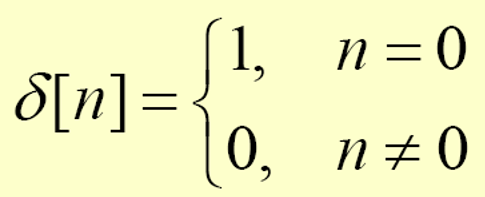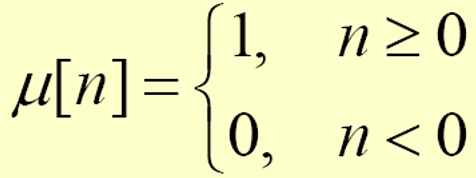文章目录
Time-Domain Representation
Signals represented as sequences of numbers,called samples
Sample value of a typical signal or sequence denoted as x[n] with n being an integer in the range − ∞ ⩽ n ⩽ ∞ -\infty \leqslant n \leqslant \infty −∞⩽n⩽∞
x[n] defined only for integer values of n and undefined for noninteger values of n
Discrete-time signal represented by {x[n]}
Discrete-time signal may also be written as a sequence of numbers inside braces:

In the above,x[-1]=-0.2,x[0]=2.2,x[1]=1.1
The arrow is placed under the sample at time index n=0
Graphical representation of a discrete-time signal with real-time samples is as shown below:

In some applications, a discrete-time sequence {x[n]} may be generated by periodically sampling a continuous-time signal x α ( t ) x_\alpha(t) xα(t) at uniform intervals of time

Here, n-th sample is given by
x [ n ] = x α ( t ) ∣ t = n T = x α ( n T ) , n = … , − 2 , − 1 , 0 , 1 , … x[n]=x_\alpha(t)|_{t=nT}=x_\alpha(nT),n=…,-2,-1,0,1,… x[n]=xα(t)∣t=nT=xα(nT),n=…,−2,−1,0,1,…
The spacing T between two consecutive samples is called the sampling interval or sampling period
Reciprocal of sampling interval T,denoted as F T F_T FT, is called the sampling frequency: F T = 1 T F_T=\frac{1}{T} FT=T1
{x[n]} is a real sequence, if the n-th sample x[n] is real for all values of n
Otherwise, {x[n]} is a complex sequence
A complex sequence {x[n]} can be written as {x[n]}={xre[n]}+j{xim[n]} where xre[n] and xim[n] are the real and imaginary parts of x[n]
The complex conjugate sequence of {x[n]} is given by {x*[n]}={xre[n]}-j{xim[n]}
Length of a Discrete-Time Signal
A discrete-time signal may be a finite-length or an infinite-length sequence
Finite-length (also called finite-duration or finite-extent) sequence is defined only for a finite time interval: N 1 ⩽ n ⩽ N 2 N_1\leqslant n \leqslant N_2 N1⩽n⩽N2 where − ∞ < N 1 -\infty < N_1 −∞<N1 and N 2 < ∞ N_2 < \infty N2<∞ with N 1 ⩽ N 2 N1 \leqslant N_2 N1⩽N2
Length or duration of the above finite-length sequence is N = N 2 − N 1 + 1 N = N_2 - N_1 + 1 N=N2−N1+1
A length-N sequence is often refered to as an N-point sequence
The length of a finite-length sequence can be increased by zero-padding
A right-sided sequence x[n] has zero-valued samples for n < N 1 n < N_1 n<N1

If N 1 ⩾ 0 N_1 \geqslant 0 N1⩾0,a right-sided sequence is called a causal sequence
A left-sided sequence x[n] has zero-valued samples for n > N 2 n>N_2 n>N2

If N 2 ⩽ 0 N_2 \leqslant 0 N2⩽0,a left-sided sequence is called a anti-causal sequence
Operations on Sequences

For example, the input may be a signal corrupted with additive noise
Discrete-time system is designed to generate an output by removing the noise component from the input
In most cases, the operation defining a particular discrete-time system is composed of some basic operations
Elementary Operations
Product (modulation) operation:

Addition operation:

Multiplication operation:

Time-shifting operation: y [ n ] = x [ n − N ] y[n]=x[n-N] y[n]=x[n−N],where N is an interger
If N>0,it is delaying operation

If N<0,it is an advance operation

Time-reversal(folding) operation:

Branching operation: Used to provide multiple copies of a sequence

operations on two or more sequences can be carried out if all sequences involved are of same length and defined for the same range of the time index n
However if the sequences are not of same length, in some situations, this problem can be circumvented by appending zero-valued samples to the sequence(s) of smaller lengths to make all sequences have the same range of the time index
Convolution Sum
The summation y [ n ] = ∑ k = − ∞ ∞ x [ k ] h [ n − k ] = ∑ k = − ∞ ∞ x [ n − k ] h [ k ] y[n]=\sum_{k=-\infty}^{\infty}x[k]h[n-k]=\sum_{k=-\infty}^{\infty}x[n-k]h[k] y[n]=∑k=−∞∞x[k]h[n−k]=∑k=−∞∞x[n−k]h[k] is called the convolution sum of the sequences x[n] and h[n] and represented comopactly as


In the example considered the convolution of a sequence {x[n]} of length 5 with a sequence {h[n]} of length 4 resulted in a sequence {y[n]} of length 8
In general, if the lengths of the two sequences being convolved are M and N,then the sequence generated by the convolution is of length M+N-1
Operations on Finite-Length Sequences
Circular Time-Reversal Operations
Modulo operaton:
< m > n = m ( m o d u l e ) N <m>_n=m (module) N <m>n=m(module)N
Circular Time-Reversal Operations:
y [ n ] = x [ < − n > N ] y[n]=x[<-n>_N] y[n]=x[<−n>N]
Circular Shift of a Sequence
If x[n] is such a sequence, then for any arbitrary integer n o n_o no,the shifted sequence x 1 [ n ] = x [ n − n o ] x_1[n]=x[n-n_o] x1[n]=x[n−no] is no longer defined for the range 0 ⩽ n ⩽ N − 1 0 \leqslant n \leqslant N-1 0⩽n⩽N−1
We thus need to define another type of a shift that will always keep the shiifted sequence in the range 0 ⩽ n ⩽ N − 1 0 \leqslant n \leqslant N-1 0⩽n⩽N−1
The desired shift, called the circular shift, is defined using a modulo operation: x c [ n ] = x [ < n − n o > N ] x_c[n]=x[<n-n_o>_N] xc[n]=x[<n−no>N]
For n o > 0 n_o>0 no>0(right circular shift),the above equation implies
x c [ n ] { x [ n − n o ] , f o r n o ⩽ n ⩽ N − 1 x [ N − n o + n ] , f o r 0 ⩽ n < N − 1 x_c[n]\left\{\begin{matrix} x[n-n_o],for \quad n_o\leqslant n\leqslant N-1\\ x[N-n_o+n],for \quad 0\leqslant n < N-1 \end{matrix}\right. xc[n]{
x[n−no],forno⩽n⩽N−1x[N−no+n],for0⩽n<N−1
a right circular shift by n o n_o no is equivalent to a left circular shift by N − n o N-n_o N−no sample periods
A circular shift by an integer number n o n_o no greater than N is equivalent to a circular shift by < n o > N <n_o>_N <no>N
Classification of Sequences Based on Symmetry
Conjugate-symmetric sequence:
x [ n ] = x ∗ [ − n ] x[n]=x^*[-n] x[n]=x∗[−n]
If x[n] is real, then it is an even sequence
Conjugate-antisymmetric sequence:
x [ n ] = − x ∗ [ − n ] x[n]=-x^*[-n] x[n]=−x∗[−n]
If x[n] is real, then it is an odd sequence
It follows from the definition that for a conjugate-symmetric sequence {x[n]},x[0] must be a real number
Likewise, it follows from the definition that for a conjugate anti-symmetric sequence {y[n]},y[0] must be an imaginary number
From the above, it also follows that for an odd sequence {w[n]},w[0] = 0
Any complex sequence can be expressed as a sum of its conjugate-symmetric part and its conjugate-antisymmetric part:
x [ n ] = x c s [ n ] + x c a [ n ] x[n]=x_{cs}[n]+x_{ca}[n] x[n]=xcs[n]+xca[n]
where
x c s = 1 2 ( x [ n ] + x ∗ [ − n ] ) x_{cs}=\frac{1}{2}(x[n]+x^*[-n]) xcs=21(x[n]+x∗[−n])
x c a = 1 2 ( x [ n ] − x ∗ [ − n ] ) x_{ca}=\frac{1}{2}(x[n]-x^*[-n]) xca=21(x[n]−x∗[−n])
Total energy of a sequence x[n] is defined by ξ = ∑ n = − ∞ ∞ ∣ x [ n ] ∣ 2 \xi =\sum_{n=-\infty}^{\infty}|x[n]|^2 ξ=∑n=−∞∞∣x[n]∣2
The average power of an aperiodic sequence is defined by P x = lim K → ∞ 1 2 K + 1 ∑ n = − K K ∣ x [ n ] ∣ 2 P_x=\lim_{K\rightarrow \infty }\frac{1}{2K+1}\sum_{n=-K}^{K}|x[n]|^2 Px=limK→∞2K+11∑n=−KK∣x[n]∣2
An infinite energy signal with finite average power is called a power signal
A finite energy signal with zero average power is called an energy signal
A sequence x[n] is said to be bounded if ∣ x [ n ] ∣ ⩽ B x < ∞ |x[n]| \leqslant B_x < \infty ∣x[n]∣⩽Bx<∞
Typical Sequences and Sequence Representation
Some Basic Sequences
Unit sample sequence

Unit step sequence

Real sinusoidal sequence
x [ n ] = A c o s ( ω o n + ϕ ) x[n]=Acos(\omega_on+\phi) x[n]=Acos(ωon+ϕ)
where A is the amplitude, ω o \omega_o ωo is the angular frequency, and ϕ \phi ϕ is the phase of x[n]
Real exponential sequence
x [ n ] = A α n , − ∞ < n < ∞ x[n]=A\alpha^n,-\infty<n<\infty x[n]=Aαn,−∞<n<∞
where A and α \alpha α are real numbers
Sinusoidal sequence A c o s ( ω o n + ϕ ) Acos(\omega_on+\phi) Acos(ωon+ϕ) and complex exponential sequence B e x p ( j ω o n ) Bexp(j\omega_on) Bexp(jωon) are periodic sequences of period N if ω o N = 2 π r \omega_oN=2\pi r ωoN=2πr where N and r are positive integers
Smallest value of N satisfying ω o N = 2 π r \omega_oN=2\pi r ωoN=2πr is the fundamental period of the sequence
Representation of an Arbitrary Sequences
An arbitrary sequence can be represented in the time-domain as a weighted sum of some basic sequence and its delayed(advanced) versions
The Sampling Process
Often, a discrete-time sequence x[n] is developed by uniformly sampling a continuous-time signal x α ( t ) x_\alpha(t) xα(t) as indicated below

The relation between the two signals is x [ n ] = x α ( t ) ∣ t = n T = x α ( n T ) , n = … , − 2 , − 1 , 0 , 1 , 2 , … x[n]=x_\alpha(t)|_{t=nT}=x_\alpha(nT),n=…,-2,-1,0,1,2,… x[n]=xα(t)∣t=nT=xα(nT),n=…,−2,−1,0,1,2,…
Time variable t of x α ( t ) x_\alpha(t) xα(t) is related to the time variable n of x[n] only at discrete-time instants t n t_n tn given by t n = n T = n F T = 2 π n Ω T t_n=nT=\frac{n}{F_T}=\frac{2\pi n}{\Omega_T} tn=nT=FTn=ΩT2πn with F T = 1 / T F_T=1/T FT=1/T denoting the sampling frequency and Ω T = 2 π F T \Omega_T =2\pi F_T ΩT=2πFT denoting the sampling sampling angular frequency
Consider the continuous-time signal x ( t ) = A c o s ( 2 π f o t + ϕ ) = A c o s ( Ω o t + ϕ ) x(t)=Acos(2\pi f_ot+\phi)=Acos(\Omega_ot+\phi) x(t)=Acos(2πfot+ϕ)=Acos(Ωot+ϕ)
The corresponding discrete-time signal is x [ n ] = A c o s ( Ω o n T + ϕ ) = A c o s ( 2 π Ω o Ω T n + ϕ ) = A c o s ( ω o n + ϕ ) x[n]=Acos(\Omega_onT+\phi)=Acos(\frac{2\pi \Omega_o}{\Omega_T}n+\phi)=Acos(\omega_on+\phi) x[n]=Acos(ΩonT+ϕ)=Acos(ΩT2πΩon+ϕ)=Acos(ωon+ϕ)
where ω o = 2 π Ω o Ω T = Ω o T \omega_o=\frac{2\pi\Omega_o}{\Omega_T}=\Omega_oT ωo=ΩT2πΩo=ΩoT is the normalized digital angualr frequency of x[n]
If the unit of sampling period T is in seconds
The unit of normalized digital angualar frequency ω o \omega_o ωo is radians/sample
The unit of normalized analog angualr frequency Ω o \Omega_o Ωo is radians/second
The unit of analog frequency f o f_o fo is herts(Hz)
Reference
1.《Digital Signal Processing:A Computer-Based Approach》